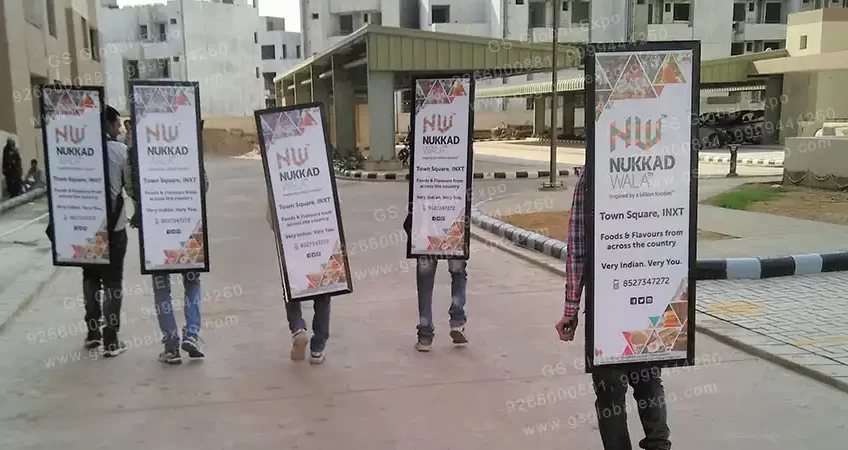Understanding BTL and ATL Marketing Activities: Strategies, Examples, and Differences
In the fast-paced world of marketing, businesses employ various strategies to reach their target audience effectively. Two of the most commonly used approaches are BTL (Below the Line) and ATL (Above the Line) marketing. Although both aim to increase visibility and sales, they differ in execution, audience targeting, and outcomes. In this blog post, we’ll explore BTL and ATL activities in detail, explain their benefits, and highlight their differences with real-world examples.
What Are BTL and ATL Activities?
BTL (Below the Line) Activities
BTL marketing focuses on highly targeted and personalized campaigns. These efforts are designed to engage customers directly, often leading to better conversion rates and measurable results.
Popular BTL activities include:
-
Direct Mail: For example, brands send catalogs or flyers directly to customers’ homes to highlight new offers.
-
Email Marketing: Personalized emails based on user behavior improve open and click-through rates.
-
Telemarketing: Companies connect with potential customers over the phone to promote specific products or services.
-
Event Sponsorship: Brands support local or niche events where their target audience is likely to be present.
-
Point-of-Sale Displays: Visually engaging displays influence last-minute purchase decisions in retail spaces.
-
Product Demonstrations: In-store or outdoor demos allow customers to experience the product before buying.
-
Experiential Marketing: Live events and brand activations provide immersive and memorable experiences.
Moreover, these tactics allow brands to collect real-time feedback and data, enhancing campaign efficiency.
ATL (Above the Line) Activities
On the other hand, ATL marketing focuses on reaching a wide audience through mass media channels. These activities are aimed at building brand awareness rather than direct engagement.
Examples of ATL marketing include:
-
Television Advertising: Commercials are broadcast to reach millions of viewers simultaneously.
-
Radio Advertising: Audio ads target listeners during peak commuting hours or popular shows.
-
Print Media: Ads are placed in newspapers and magazines to engage readers across regions.
-
Outdoor Advertising: Billboards, posters, and hoardings are strategically positioned in busy locations.
-
Online Display Ads: Banners on websites and apps increase brand visibility in the digital space.
-
Sponsorships & Endorsements: Partnering with celebrities or high-profile events boosts brand credibility.
In addition to expanding brand reach, ATL strategies build long-term recognition and trust among a broad audience.
Key Differences Between BTL and ATL
Understanding the difference between BTL and ATL activities is crucial for choosing the right approach.
1. Targeting
-
BTL is aimed at a specific audience, allowing businesses to tailor their message.
-
ATL, in contrast, targets the general public, offering limited customization.
2. Engagement
-
BTL activities offer interactive experiences that encourage customer participation.
-
ATL, however, relies on one-way communication, with minimal direct interaction.
3. Cost and ROI
-
BTL campaigns are usually cost-effective and provide measurable results.
-
ATL, on the other hand, often involves higher investment and less measurable ROI.
4. Communication Channels
-
BTL uses direct channels like phone, email, and events.
-
ATL leverages mass media, such as TV, radio, and print.
As a result, the selection between BTL and ATL depends on campaign goals, budget, and desired reach.
Examples of BTL and ATL in Real Life
Let’s consider how companies use these strategies in practice.
BTL Example:
A health and beauty brand hosts a pop-up booth in a mall, offering free skincare consultations and product trials. As a result, the company builds trust and collects valuable customer data.
ATL Example:
A leading car manufacturer launches a national TV commercial during the IPL season. Consequently, millions of viewers are exposed to the new model, increasing brand awareness across regions.
Furthermore, companies often combine both strategies to get the best of both worlds — precision and scale.
Conclusion
To sum up, BTL and ATL marketing are two distinct but complementary approaches. While BTL focuses on direct engagement, personalized communication, and measurable impact, ATL prioritizes widespread visibility and brand recall. Therefore, the ideal strategy depends on your business goals, target audience, and budget. By using both methods strategically, you can maximize your marketing effectiveness and build a stronger brand presence.

![]()
Key Benefits of the Service
Watering your lawn and is the key to preserving its lushness and beauty. The experts carefully design your sprinkler system to ensure maximum coverage to your lawn. Whether you are looking for a brand new irrigation system to maintain your lawn.
Extend your home with a beautiful garden
Your property value increases many times initial value
Aesthetic garden beauty that improves with age
Allround certified and insured landscapers
Our Landscapers attend annual training seminars

